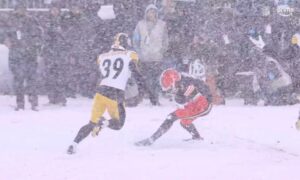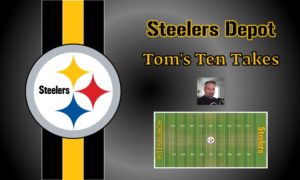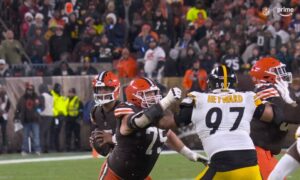By Matthew Marczi
As intimated in the first part of this article, the Pittsburgh Steelers hold a strong, upstanding reputation based on high character and family values that has served the organization well for the past 80 years. And by professional sports standards, the Rooney family most certainly can hold its collective head high for the job that it has done balancing the line between remaining principled and selling out for success.
But just like every professional sports franchise, the Steelers are in the business of making money, and making money means winning games. Sometimes, the players that can help you win games are those of questionable character that can get an organization in trouble down the road. So how does one navigate the tightrope bridging high character and on-field success without falling off?
In the Steelers’ case, they tend to err on the side of caution, though they also have a tendency to stick behind their players when they have reason to believe that their character transcends their transgressions.
This is a quality that descends from family patriarch Art Rooney, Sr. In The Pittsburgh Steelers: The Official Team History, his son, Art Rooney, Jr., is quoted as saying of his father that “he took the Golden Rule and put a little bit of the North Side in it”. He recounts his father saying, “treat everybody the way you\’d like to be treated. Give them the benefit of the doubt. But never let anyone mistake kindness for weakness”.
That sentiment could also be said to serve as the organization’s guiding light when it comes to handling its players’ discretions. The most famous instance before recent times came in 1973, during Art Sr.’s penultimate year of nominal organizational control. He and son Dan Rooney, who oversaw day to day operations by then, had quite a mess on their hands courtesy of defensive tackle Ernie “Fats” Holmes.
Without regurgitating his complicated and troubled backstory, which suffice it to say involved a life on the edge in more ways than one, the events leading up to his shooting and wounding a police officer in a helicopter on March 16, 1973 are recounted in The Ones Who Hit the Hardest, written by Chad Millman and Shawn Coyne, and excerpted on ESPN’s website.
In brief, Holmes grew up fearing failure. While he struggled as a rookie in 1971 to make the roster, his family back in Houston, Texas awaited his paychecks. That pressure did not help restrain his manic personality. By the waning days of winter in 1973, he was struggling both financially and emotionally, doing everything he can to support his family while anticipating a costly divorce.
He spoke to Dan Rooney about his plight, and upon invitation drove through the night from Texas to Pittsburgh. When he arrived in town and the offices at the facility were closed, he just kept driving. His paranoia exacerbated by the disappointment of yet another door seemingly slammed shut in his face, he began sensing that the other drivers on the road were out to get him.
He stopped at the scene of an accident to explain that the trucks around him were attempting to cut him off the road, but the officer ignored him. So he got back in his vehicle and kept driving. And the traffic kept closing in on him. And then he pulled out his shotgun, blasted through his window, and tried to shoot out the tires of passing motorists.
After finally blowing a tire and driving off the road, Holmes fled into a nearby field, where officers and a police helicopter pursued him. He began firing at the helicopter, hitting one officer in the ankle. And then he dropped the shotgun and raised his hands in the air, defeated.
Holmes phoned Rooney’s house from prison, and his wife relayed the message from his troubled player. Rooney had just spoken to him the day before about his circumstances and told him they would figure it out together. So he made good on his word.
The Rooney family understood their player, who he really was, and what drove him to his actions. As Art Rooney, Jr. later reflected, they “all thought he needed mercy”. So they paid for his legal representation, then paid his $45,000 bail, after which he was admitted to a psychiatric hospital for two months—paid for by the Rooney family—where he was diagnosed with acute paranoid psychosis.
Later that summer, Ernie Holmes won the starting defensive tackle job outright, alongside Joe Greene, to form the interior of what would become known as the Steel Curtain. He played for the Steelers until 1978, when he was finally traded due to weight problems.
Why did the Rooney family go through so much trouble for somebody who fired a shotgun at police officers? How could they put so much stock in their personal conversations with Holmes that led them to believe that the man transcended the actions?







